Since 1966, the Capital Regional District (CRD) in British Columbia, Canada (Map 1 below) has developed an outstanding park and trail system, which today is perhaps one of the finest regional park systems in North America [Note 1]. Primarily a natural areas system encompassing three biogeoclimatic zones (Map 2), CRD Regional Parks comprises 33 parks covering more than 33,000 acres and three regional trails extending more than 110 kilometres (Map 3). CRD Regional Parks recently prepared a new strategic plan (Regional Parks Strategic Plan 2012-2021) which sets the direction for the regional parks and trails system over the next decade. The strategic plan defines the long-term “big picture” framework for our regional parks and trails. As part of the preparation of the strategic plan, Regional Parks undertook extensive public consultation to find out what was important to people about the regional parks system. What we found was quite surprising – people expect the regional parks system to fulfill a wide range of wants and needs, apart from just a place to spend leisure time.
1 — Politically, the CRD is comprised of thirteen municipalities and three electoral areas (e.g. non-incorporated areas). The CRD has a population of about 375,000 and an area of about 245,000 hectares. Victoria, the provincial capital, anchors the region’s urban core.
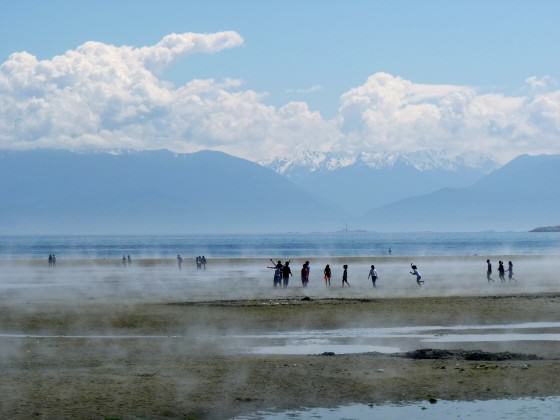
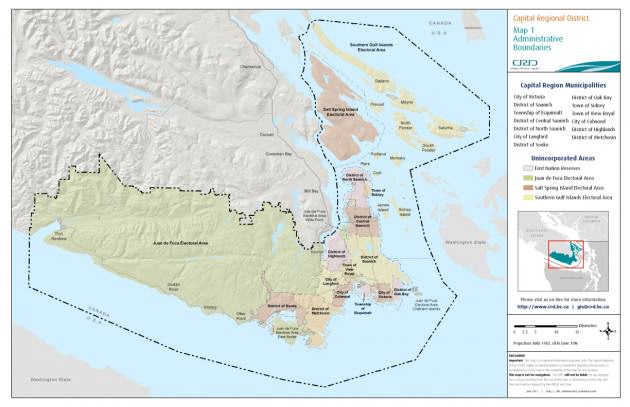
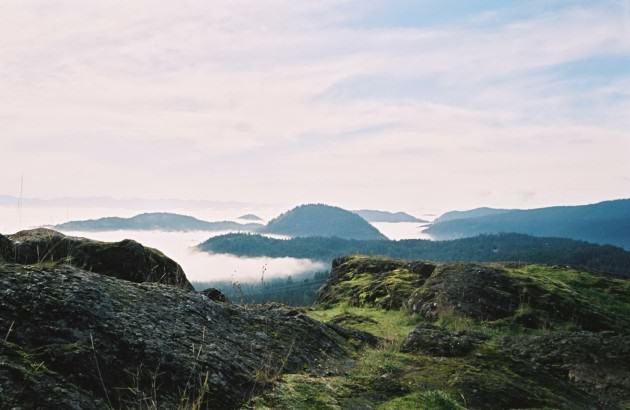
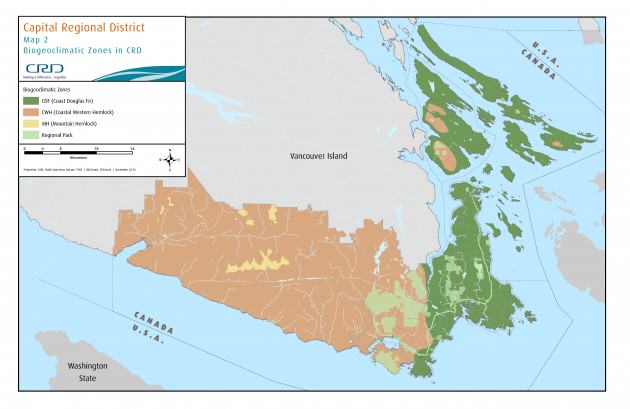
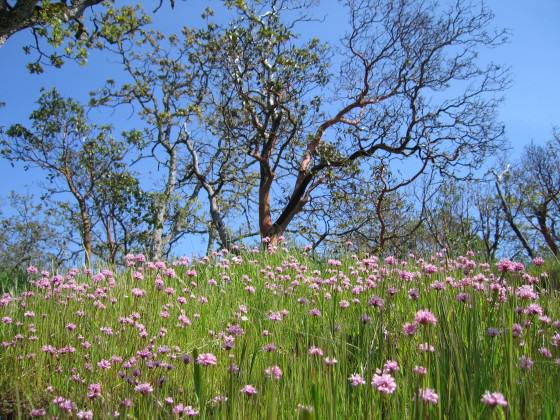
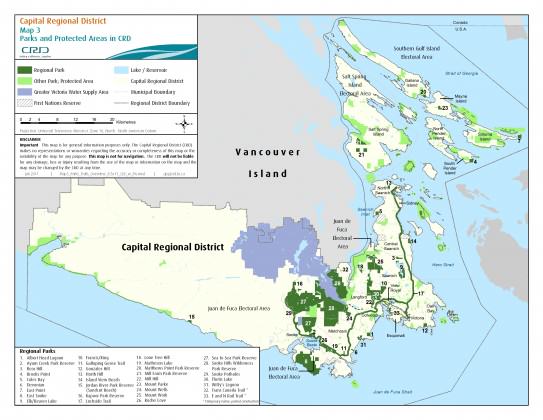
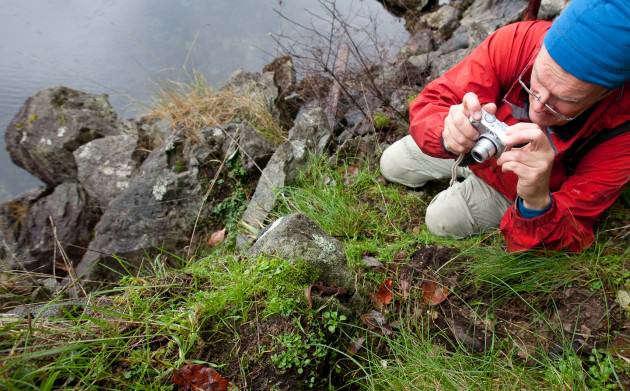
What People Really Want from Regional Parks
Citizen involvement in the development of the strategic plan was an essential component of the planning process. To this end, a comprehensive public engagement strategy was developed to provide opportunities for regional residents to contribute their ideas into the preparation of the strategic plan.
Opportunities for residents to express their ideas included:
- Creation of a regionally representative Citizen Advisory Panel (CAP) to guide development of the strategic plan
- Public engagement at community dialogue sessions throughout the region
- Engagement with secondary school students at seven area schools
- Availability of an on-line and a hard copy response form
- Presentations by interest groups
The public was asked to comment on the following themes:
- Vision for the regional parks and trails system
- Values and benefits of regional parks and trails
- Opportunities and challenges for regional parks and trails
- Recreational opportunities
- Environmental conservation
Secondary students were invited to directly write down their comments on the following themes:
- Types of recreational activities engaged in/desired in regional parks
- Location of future regional parks
- Meaning of regional parks to “me”
- Environmental conservation in regional parks
The information received during the consultation process highlighted participants’ strong beliefs and opinions about Regional Parks. Through an analysis of the data, a number of key themes emerged which clearly indicate the public’s high valuing of, and expectations from, the regional parks system. You can see the full public comment report here.
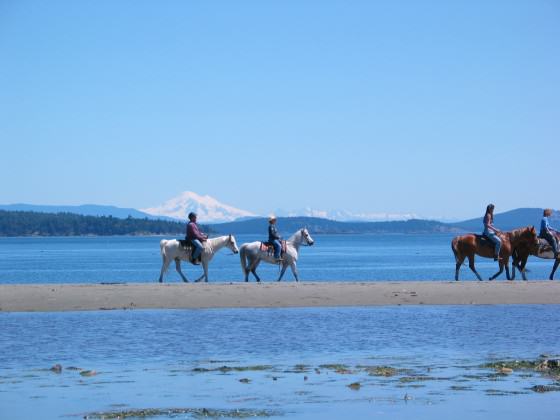
Ten of the most salient themes for urban nature conservation are presented below, in no rank order of importance.
(1) Expand the park and trail network; develop more connections, corridors, and linkages.
The public is vitally interested in seeing Regional Parks develop a network of parks and trails that provides connectivity for people, wildlife, and ecosystems. Representative quotes include:
- “Maintain large swathes of area better able to sustain bio-diverse populations, instead of subdividing the parks into little ‘islands’.”
- “Regional parks can help interconnect the many smaller patchworks of small parks into something bigger and better.”
- “Parks should become hubs for re-establishing native ecosystems to benefit native flora and fauna.”
(2) Value parks for their ecosystem services and ability to mitigate climate change impacts
Many people are aware of the value of park lands for the “free” nature’s services they provide, including reducing the impacts of climate change. Representative quotes include:
- “People are worried about climate change, so the time is right to protect natural areas that help counteract the negative impact of humans and human development on the climate.”
- “Parks provide rain water filtration to ground water and act as a sink both regarding water and carbon, unlike cement/pavement structures. “
- “Build on climate change awareness and community realization that we have to do more; parks and trails are the lungs of our region….our air and water.”
(3) Maintain biodiversity and ecosystem integrity; understand and monitor what we have, restore landscapes, and address invasive species.
Public concern with the environment came through strongly. The public is very supportive of regional parks’ role in environmental conservation and landscape protection. Representative quotes include:
- “Protect and maintain the biodiversity of our parks in both a natural and environmentally safe manner, and remove invasive species once and for all.“
- “Increase ecosystem restoration projects, education projects, and the development of more conservation corridors.”
- “Use scientifically sound methods of preserving the plant and animal life in the parks.”
(4) Acquire more land while it is still available; target beaches, forests, lakes, rivers, and lands in the western part of the regional district; maintain open space within the urban fabric.
The public expressed strong support for continued acquisition of land for parks, particularly in light of continuing development pressures and increasing regional population growth. Representative quotes include:
- “Public opinion is strong for land acquisition. More parks for reasons of conservation and global warming (more trees = less carbon dioxide).”
- “Expand the park system; this is vital with the push for development.”
- “We should have more parks. Parks can both preserve habitats, old growth trees, sensitive areas, and salmon spawning grounds, and provide more green space for residents to enjoy. It is a win-win for all.”
(5) Ensure that parks and trails are accessible and in close proximity to all regional residents.
The issue of easy accessibility to parks and trails was a predominant concern for many regional residents. Accessibility also involves parks being free of charge. Representative quotes include:
- “I value that the parks are a quiet get-away from city life, yet still so close to home.“
- “It is important that the parks are accessible to everyone in every area.”
- “Parks are great places for everyone to go or use, especially those with limited incomes.”
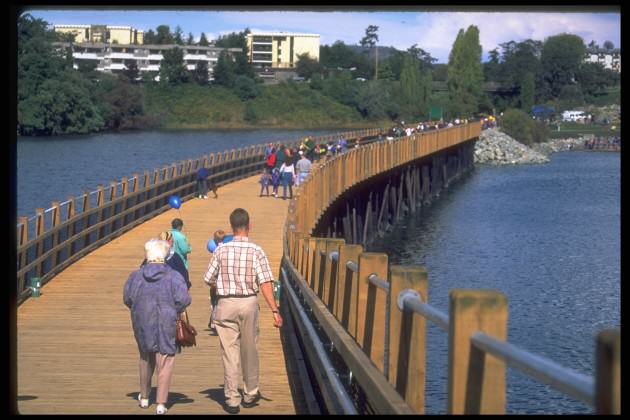
(6) Keep the parks and trails clean, safe, and well maintained
Many people commented on how much they value parks being well cared for and maintained, and the importance they place on feeling safe in the parks. Representative quotes include:
- “The parks are safe for everyone to use. They make the community better.”
- “The parks are mostly very well maintained. It feels like wilderness and the CRD has lots of parks close to the city where a family can safely enjoy the outdoor life.”
- “Please just keep the parks in good condition.”
(7) Recognize that parks and trails are important for exercise, fitness, health, and well-being
Public comments heavily emphasized the importance of parks for encouraging and supporting healthy, active life-styles, as well as being fun, spiritual, and relaxing places. Representative quotes include:
- “Undisturbed nature, near the city but virtual wilderness, a place where almost everyone can connect with nature and keep physically and mentally fit.”
- “The calming experience and relaxing exercise of walking, hiking, jogging, bird observation, and flora/fauna appreciation makes living in our area tolerable in an ever frustrating and populating world.”
- “Being in a place that’s free of cars, loud industrial noise and commercial advertising is just an overwhelming relief—it feels like you can breathe again.”
- “Parks bring the natural world to the doorstep of the urban dweller. They provide an indispensable place of peace and beauty, of plants and animals, a place to calm the soul.”
(8) Utilize parks as green space buffers to urban and suburban sprawl
Respondents strongly support parks and trails serving as buffers to development and regional sprawl. Representative quotes include:
- “Parks serve as natural green space and a buffer to traffic and the spread of urban sprawl.”
- “Parks are pockets of accessible green space in an increasing urbanized environment.”
- “As Victoria gets more crowded with houses and commercial real estate, parks are going to be our oasis of green space.”
- “As we build more and more, I think it is imperative to keep parks so we have places to be in nature and not on cement.”
(9) Encourage current generations to leave a parks legacy for future generations
A strongly expressed sentiment was a concern that we protect lands now and build a strong park system as a legacy for (and duty to) future generations. Representative quotes include:
- “Parks and areas of nature are very important for future generations and the only way we can teach our kids about the environment and what it looked like before mankind came and logged it and built houses.”
- “Parks are valuable for future generations in their naturalness.”
- “We need to have parks to show our children and grandchildren nature as it used to be”.
(10) Celebrate public support of Regional Parks and its relevance to their lives
The majority of respondents support the current direction and focus of regional parks in protecting the environment and providing outstanding recreational opportunities. Representative quotes include:
- “The regional parks provide access to nature, a place to get out of the car, to ride bikes and to walk. They connect urban areas and urban to rural areas.”
- “I love being surrounded by a greenbelt. I look from my urban condo to the north and west. I can see an almost continuous green line on the horizon made up of parks all the way to Salt Spring Island.”
- “The value of regional parks to me is that they provide a beautiful place that no matter how old or young, rich or poor you are, they are available and accessible to you. They also prove a valuable tool for protecting places for future generations to enjoy as well.”
It seems clear that public expectations of regional parks and trails is wide-ranging. And with time, these expectations will likely increase, as the stresses of urbanization, population growth, changing demographics, loss of natural areas and biodiversity, and climate change continue to affect the region. This presents many challenges for CRD Regional Parks, some of which are explained in more depth below.
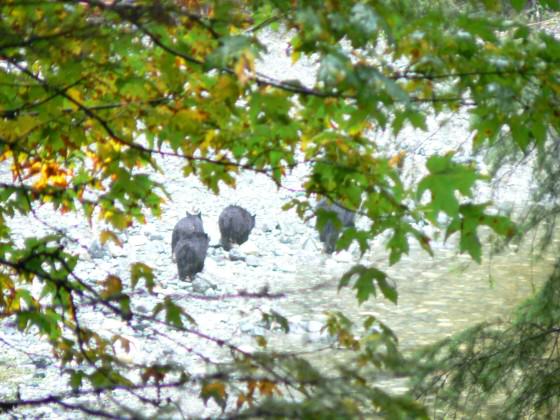
Challenges Facing Regional Parks
(From the Regional Parks Strategic Plan 2012-2021, pages 56-66)
Managing for Growth:
By the year 2038, the regional population is expected to increase from a current level of 375,000 to 475,000, with anticipated continuing growth well beyond 2038. The population structure will also change with marked increases in older age groups. This has profound implications for Regional Parks, including:
- More visits to regional parks will result in increased demands for facilities and services;
- Crowding and pressure for recreational space will create a need for more and more varied places to recreate;
- Utilizing the existing land base for development will result in the loss of natural areas, greenspace and biodiversity; and
- Existing parks will become more valuable as places that conserve biodiversity and offer people a place to get away from urban and suburban development.
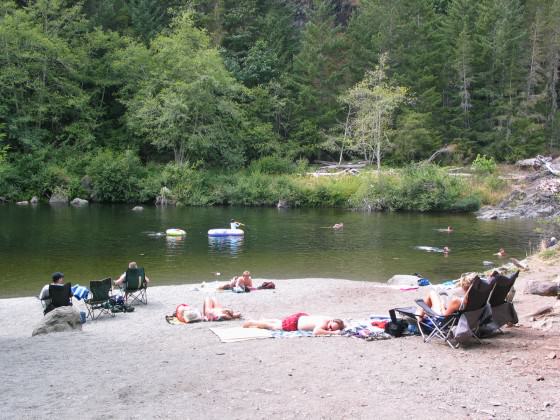
Maintaining Ecological Integrity: Regional Parks represent remnants of the region’s original ecosystems. It is important to ensure that these ecosystems continue to function, evolve and remain viable over the long-term. Ensuring this ecological health is a challenge for Regional Parks:
- Most parks are fragments of altered landscapes and do not protect complete ecosystems
- Park boundaries have often been determined by administrative rather than ecological considerations
- Park environments are subject to impacts from urban, suburban, and rural land uses on surrounding lands
- Park ecosystems are subject to impacts from visitors and visitor facilities
- Native plant and animal species in regional parks are being altered and displaced by invading non-native species
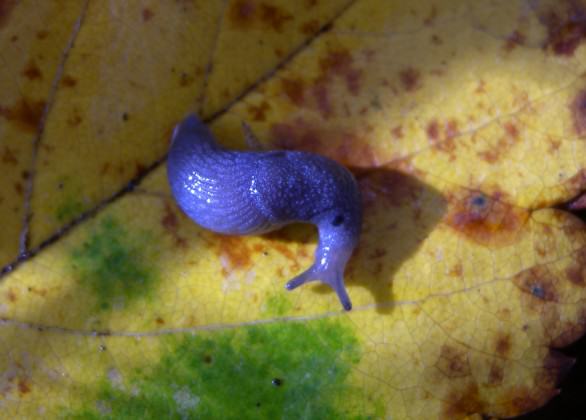
Connecting with Nature:
People visit regional parks to participate in activities such as hiking, walking, horseback riding, cycling, camping, swimming, boating, beachcombing, fishing , nature study, and organized group activities. These activities can be enjoyed year-around and they contribute to a healthy lifestyle. However, this high level of use impacts the very things these visitors come to enjoy. Regional Parks is challenged to ensure a sustainable harmony exists between sound land stewardship and outdoor recreation activities.
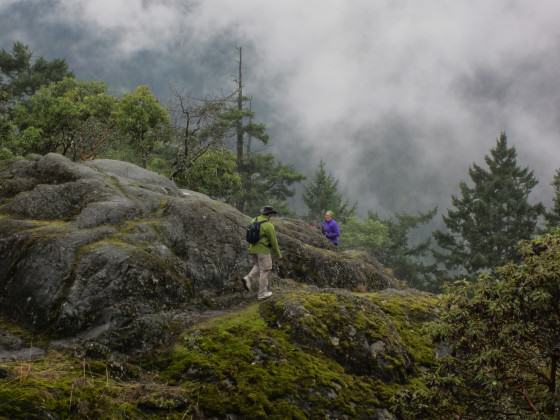
Funding Existing Demand:
Regional Parks is supported primarily through property taxes, with a 2012 operating expenditure budget of $10,014,290. Regional Parks faces significant funding challenges and effective financial management is essential to ensure the long-term sustainability of the system. The organization must sustain the capacity to operate and manage the system in a fiscally responsible manner, while providing stewardship of natural and cultural resources and built infrastructure, and continuing to deliver excellent services to park visitors.
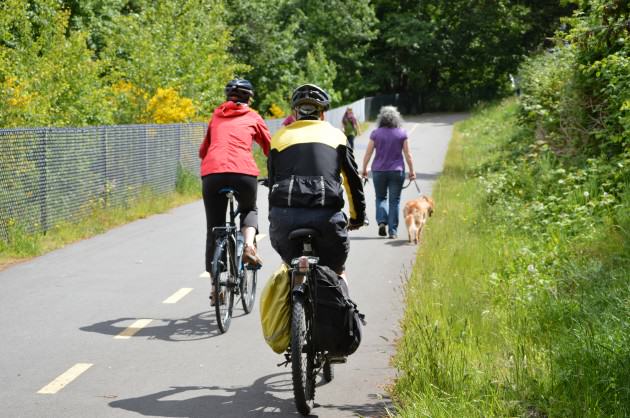
Acquiring New Regional Parkland:
In 2000, the CRD Board established a ten-year Land Acquisition Fund at a rate of $10 per average residential household. The fund generated approximately $1.7 million per year to purchase land for regional parks and trails. In 2010, the Board extended the Land Acquisition Fund for another ten years and increased the fund by $2 per average residential household per year, to a maximum of $20 in 2014 through to 2019. The Fund will generate approximately $3.4 million per year at the $20 rate. In 2010, Regional Parks made significant acquisitions of parkland and the financial commitments for those purchases extends to 2015. As a result, Regional Parks will not have significant funds for further land acquisition until 2016.
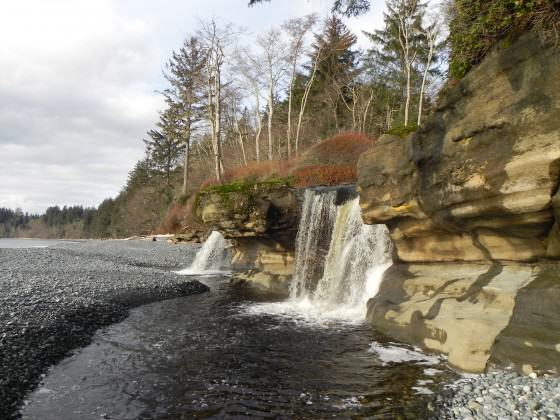
Integrating Land Use Planning:
Regional parks and trails help define the regional landscape, and it is important to manage them in the context of their relationship with the rest of the landscape. However, the regional parks and trails system is only one part of the land use planning in the CRD. It is important to manage land use both inside and outside of regional parks and trails boundaries. This is one reason why Regional Parks must collaborate with others involved in land use planning. This collaboration is also critical in establishing landscape corridors in support of biodiversity.
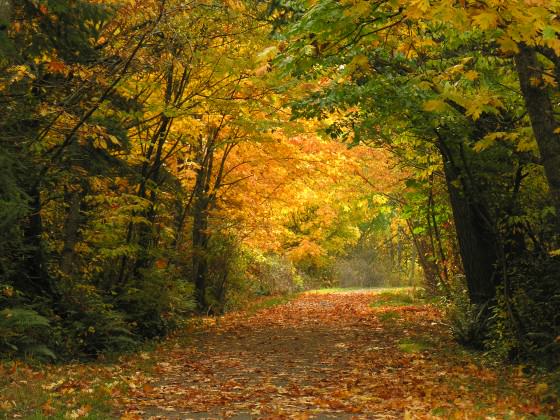
Looking to the Future
In spite of the many challenges facing Regional Parks, we are very optimistic about the future of the region and the regional parks system. The CRD is fortunate to enjoy high levels of public support for the protection of green and blue space as well as continuing demand for accessible opportunities to connect with the natural world. Regional Parks is committed to providing residents and visitors with a world-class parks system that both protects the environment and provides for outstanding recreational opportunities. This commitment is reflected in the Strategic Plan’s goals for regional parks. (See the Regional Parks Strategic Plan 2012-2021, page 74.
Goals for Regional Parks
Regional Parks are dedicated to:
- Protecting the region’s extraordinary biodiversity in perpetuity
- Providing for the health, inspiration and education of residents and visitors through human-powered outdoor experiences and activities that foster enjoyment of, and appreciation and respect for the region’s natural environments
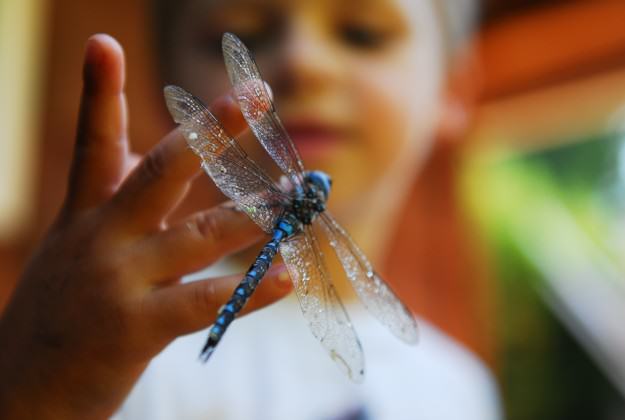
Adding to this, one of the most exciting initiatives included in the Strategic Plan is promotion of the idea of managing half of the land and waters in the CRD for the conservation of nature. Otherwise known as “Nature Needs Half”, this idea is explained in the vision statement as:
In this century, regional parks and trails will become part of a larger integrated and connected system of natural areas. Subscribing to the idea that “nature needs half”, policies and actions are explored through sustainability planning to significantly enhance the system of natural areas in the region in order to sustain life supporting ecological processes. By conserving at least half of the Capital Region’s land and water base for nature, residents may live and work in harmony with the environment.
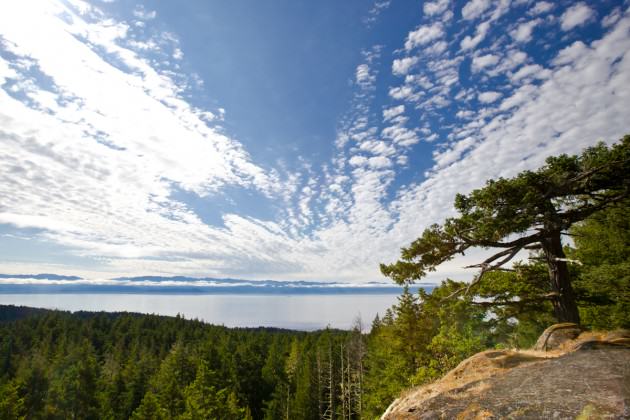
Regional Parks is starting to act on this concept by collaborating with CRD Regional Planning to embed Nature Needs Half as a policy direction in the development of the Regional Sustainability Strategy. This multi-year planning process will result in a comprehensive regional growth management plan that addresses issues such as transportation, population change, settlement patterns, and resource management. Discussions are now taking place to define what “nature” and “half” mean in the context of the CRD, and how this concept can move from idea to implementation over the next several decades.
In support of this, Regional Parks has included a graphic long-term vision for completing the parks and trails system in the Strategic Plan (Regional Parks Strategic Plan 2012-2021, pages 79-82). Realizing this proposed system will take time and require innovation, collaboration, financial resources, public support, and political direction. Map 4 shows the proposed system, with areas in orange identifying areas of acquisition interest for Regional Parks.
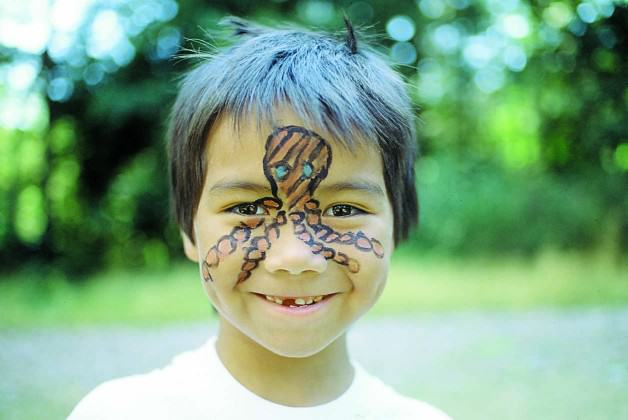
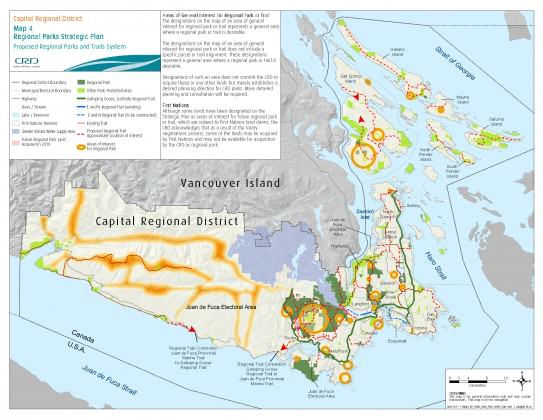
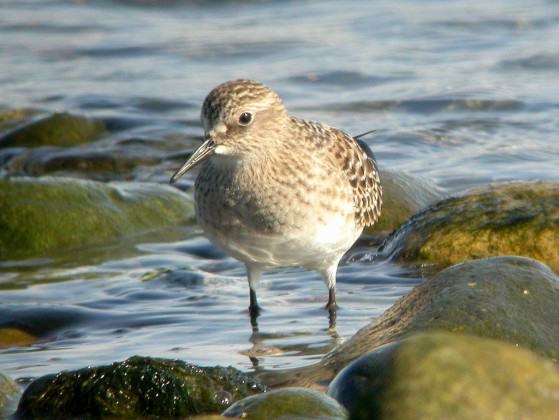
Conclusion
It seems clear that Regional Parks are very important to residents of the CRD and very much a part of their everyday lives — their relevance to the public is high. But, as we have seen, this creates numerous challenges in trying to meet these expectations in an era of budgetary constraints, limited capacity, and changing conditions and demands.
Regional Parks has recently developed a comprehensive strategic plan which lays out how we will meet these challenges over the next ten years, and which describes our vision of at least half of the land and water base being managed for nature conservation. With continuing public and political support, we feel confident that we will be able to meet these challenges and continue to offer the public outstanding opportunities to connect with nature close at hand and on demand.
Lynn Wilson
Victoria, British Columbia
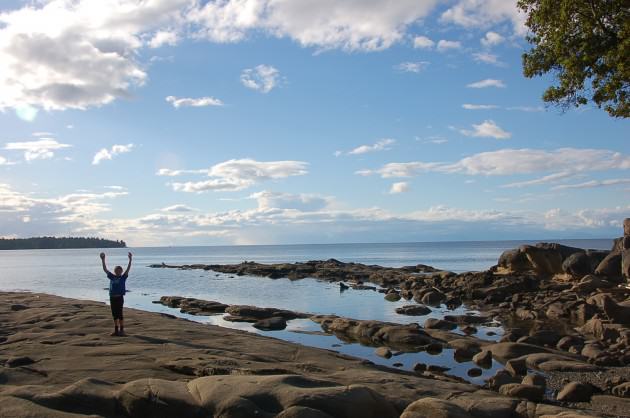
Further reading
Regional Parks Strategic Plan:
http://www.crd.bc.ca/parks/planning/strategicplan.htm
http://www.crd.bc.ca/parks/documents/regionalparksstrategicplan.pdf
Salient facts about Regional Parkst: http://www.crd.bc.ca/parks/preservation/newparks.htm
Information about the strategic planning process: http://www.crd.bc.ca/parks/planning/strategicplan.htm
The public comment report: http://www.crd.bc.ca/reports/regionalparkscommitt_/2010_/10october_/20101020agendaitem5r-1/20101020agendaitem5r.pdf
Information about the land acquisition fund: http://www.crd.bc.ca/parks/documents/landacquisitionbulletin2011.pdf
The Wild Cities Project: http://wild10.org/en/program/the-global-foru/working-coalitions/wild-cities
Nature Needs Half website: http://natureneedshalf.org/home/


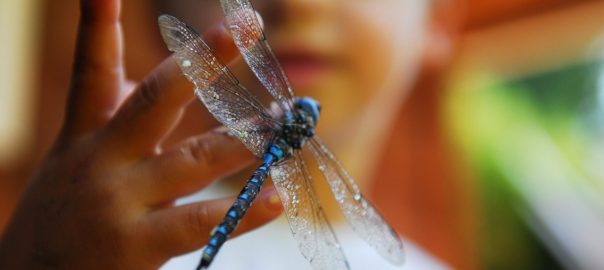
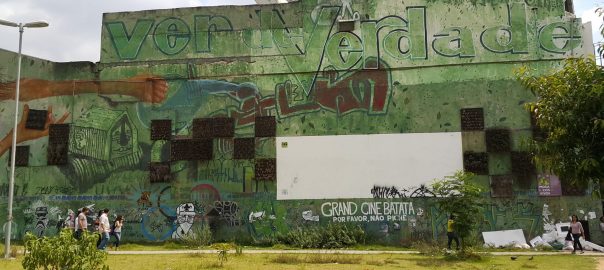
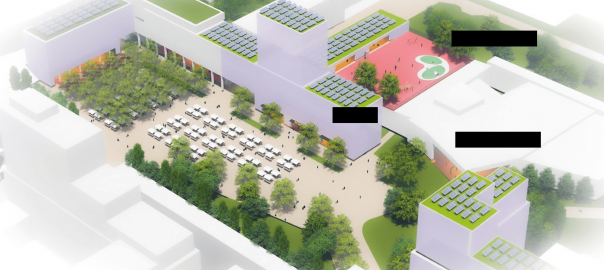
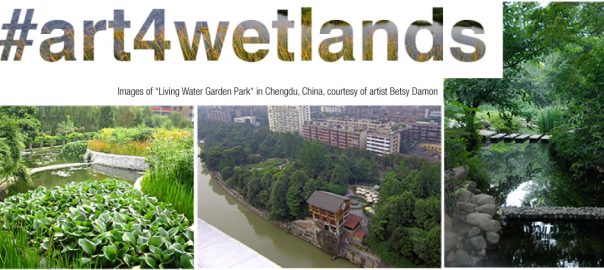
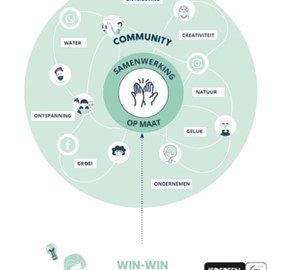
Leave a Reply